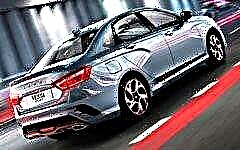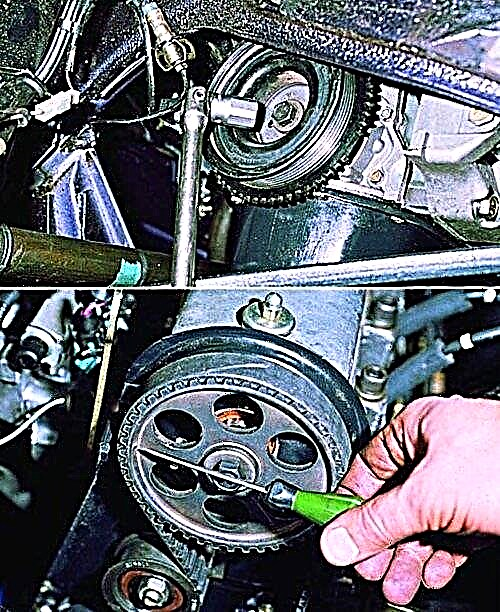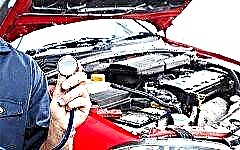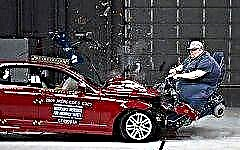

The content of the article:
- New environmental standards
- Background: "Dieselgate-2015"
- Not only Volkswagen and not only program code
- Conclusions of the Research Center of the European Commission
- New Testing Standards
In September 2015, the global car manufacturer Volkswagen was accused by the US Environmental Protection Agency of fraudulent testing for manufactured vehicles. The scandal has been going on for three years, and more and more sides are being drawn into it. Today in Europe, they started talking about a new scheme of fraudulent car companies.
New environmental standards

The European Community has been consistently pursuing a policy of planned reduction of the level of environmental pollution in its countries. The government pays great attention to the degree of gas pollution of the atmosphere due to road transport. In order to normalize the environmental situation, the Brussels European Commission adopted and approved a plan for the phased reduction of carbon dioxide emissions into the atmosphere on the territory of the Commonwealth countries.
As early as 2015, the Commission established a limit value for the level of harmful emissions for cars - 130 grams per 1 km of car traffic. In fact, last year this figure was 136 grams per 1 km. According to the adopted plan, in 2020 the limiting indicator of harmful emissions should be 95 grams per 1 km of travel.
In order for the new cars to meet the accepted environmental safety standards, manufacturers had to modernize the production of vehicles and make a number of significant changes in technological processes. Unfortunately, automakers have more than creatively approached the solution of this problem, demonstrating their "talents" in a completely different area than the European legislators were trying to direct them to.
Background: "Dieselgate-2015"

In 2015, the Volkswagen automobile concern was accused by the US Environmental Protection Agency of deliberately underreporting the results of testing the emission levels of automobile engines in testing its products.
Under the pressure of irrefutable evidence based on the opinions of experts from independent certified research laboratories, the management of the concern was forced to admit that specialized software was built into the cars, which indicated underestimated exhaust gas volumes.
The software for the following Volkswagen models was changed:
- Golf - 6;
- Tiguan;
- Beetle;
- Jetta;
- Passat - 7.
Illegal corrections of the program code and other brands of cars included in the concern were not spared:
- Lamborghini;
- Audi;
- Skoda;
- Bentley.
The number of cars sold by the company worldwide and declared as meeting international environmental standards is depressing - 11 million! The authorities of a number of countries ordered the company to recall cars whose models were tested using fraudulent software.
The concern suffered major losses both in the financial area and in the area of the company's reputation. Moreover, in 2016 the company was ridiculed by giving it the Shnobel Prize "For solving the problem of harmful automobile emissions by activating the automatic emission cleaning system during testing."
Not only Volkswagen and not only program code

Unfortunately, not only the German carmaker became famous for its machinations when testing a car. Last year, the independent French agency DGCCRF found that Renault had been safely bypassing pollution standards for a quarter of a century!
It turned out that Renault diesel engines turn off the engine exhaust recirculation system at low temperatures. Recirculation, on the other hand, raises the minimum temperature point, reducing emissions. The shutdown leads to the fact that, for example, in the Renault Capture model, the declared level of harmful emissions in reality was exceeded by more than 370%!
Another trick of the manufacturers, which was caught not only by Volkswagen and Renault, but also by a number of other concerns, is the use of such a concept as "thermal windows". To understand the essence of the situation, you have to delve a little into the nuances of the automotive design business.
To reduce the level of harmful emissions, there is such a technical unit as a catalytic converter. At low temperatures, engine starts with this device are accompanied by the formation of strong water condensation, which leads to the start of corrosive processes on the catalytic converters themselves.
In order to avoid corrosion, regulations allow testing to "weaken" the emission control system. But in a number of automobile plant laboratories, this indulgence was taken quite lightly: the boundaries of the "thermal windows" were decided to be pushed as far as 18 degrees Celsius, that is, the level of exhaust gases hazardous to human health and the general environmental situation in the laboratory began to be controlled only when the temperature reached + 18.
Needless to say that a huge share of harmful emissions was not only not neutralized by the target technical unit, but was not measured during the tests ?!
Conclusions of the Research Center of the European Commission

Since the outbreak of Dieselgate three years ago, automakers have taken a number of steps to bolster their faltering position. This time, the manufacturers took care of forcing environmentalists to adjust the standards planned in 2020 for adoption in such a way as to make their situation as easy as possible.
The European Commission, which investigated the correctness and purity of the applied testing technologies of the produced cars, uncovered a new fraudulent scheme in the tests. This time, it is not aimed at underestimating, but, on the contrary, deliberately overestimating the indicators of emissions of harmful substances into the atmosphere.
The European Commission found the following data falsification mechanisms:
- For testing, cars with discharged batteries were installed. During testing, part of the engine's work was aimed at recharging them, which increased the load and the volume of harmful emissions.
- The start-stop function was disabled on the tested vehicles. This system, by temporarily shutting down the engine, significantly reduces the volume of harmful emissions. Its shutdown also contributed to an increase in the load on the engine and an increase in the volume of harmful emissions into the atmosphere.
- The gearbox software has been tuned in such a way that the operation of the mechanism provides the maximum load on the running engine.
European Energy Commissioner Miguel Arias Cañete noted that the results of tests carried out by the automaker companies showed the level of pollutants four and a half percent higher than similar tests carried out in independent research laboratories. The European Commissioner noted that "such tricks will not work, and the Energy Commission will do everything in its power to ensure that the cars are tested in accordance with the real situation and real engine loads."
Unlike the 2015 scandal, which featured a specific automotive concern, the 2018 scandal does not name specific manufacturers. The reason is not that the European Commission covers someone specific, but that the list of companies involved in such manipulations is quite large.
Another attempt to falsify the real level of harmful atmospheric emissions was recognized as unsuccessful by the German Automobile Industry Association. Association representatives described the failed attempt as "counterproductive." According to the results of marketing research, after the test results were leaked to the general public, the trend of acquiring cars with lower levels of carbon dioxide and other harmful elements emissions became obvious. Against this background, models of electric vehicles and cars with a combined electric-gasoline engine gained a great advantage in the automotive market.
New Testing Standards

The systematic falsification of test results and attempts to use the imperfection of regulatory technologies in order to influence the not yet adopted indicators of the standards led to the fact that the relevant committees of the European government were concerned with countermeasures to save the environmental situation.
At the end of the third quarter of 2018, the European Energy Commission plans to invite the government to legitimize new standards governing the organization and conduct of vehicle testing. The new standard is called the Worldwide Harmonized Test Procedure for Light Vehicles (WLTP).
Automotive manufacturers currently use the NEDC regulatory standard in Europe to test their products. This standard is considered obsolete because it has a number of test scenarios that do not correspond to real-life vehicle situations.
The new standard regulating the verification of fuel consumption and the volume of harmful engine emissions will be aimed at the most realistic scenarios. An interesting feature of the developed technique is the fact that not only different modes of engine operation, speed modes and road conditions, but also the weight and equipment of various car models will be taken into account during the tests. This should significantly complicate the process of distorting the results for amateurs of unscrupulous testing, and, of course, help to draw up a real situation of engine operation during the tests.
On the eve of the adoption of the new test standard, many European car manufacturers have stopped production of a whole range of models, or "took a break". I would like to hope that the thundering scandals and unsuccessful attempts to influence legislators and environmentalists will remain in the past, and automakers will stop trying to deceive the law and the consumer and begin their direct business - the development of technology that will comply with environmental norms and standards accepted in society.











